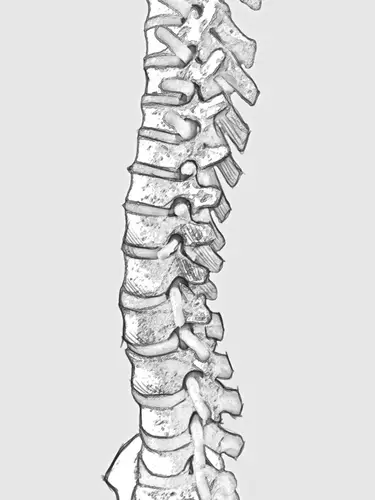Introduction
Joint cracking, especially in the spine, is a common occurrence that many people are familiar with. The pops and cracks can provide temporary relief, but what is actually behind these sounds? does it affect the spine stability?

What Causes Joint Cracking?
The noises when cracking joints are caused by releasing gas bubbles in the fluid between joints, known as the synovial fluid. When the joint is compressed, these bubbles combine into one larger bubble and create the popping sound upon rapid release. Tension from tight muscles and vertebral instability are factors that can lead to joint compression and cracking.
Temporary Relief, without addressing the spine stability
The sensation of relief after cracking joints is temporary, lasting about 30 minutes to an hour or two at most. This is because the larger gas bubble eventually dissipates, and joint tightness returns. While cracking can provide short-term pain relief, it does not address the root cause of joint tightness and instability.
Potential Risks
Frequent joint cracking does not appear to increase osteoarthritis risk as once feared. However, it may still cause harm for those with existing joint conditions. Joint cracking can damage ligaments over time in vulnerable joints. Overall, limiting cracking is wise especially if experiencing pain or injury.
Tight Muscles and Instability
As mentioned before, the underlying issues behind joint cracking are tight muscles and joint instability. Imbalanced muscle tension places strain on joints, while instability reduces proper alignment. These issues arise from a lack of flexibility, muscle weakness, poor posture, and injury.
Exercise for Healthy Joints
The best approach for reducing joint tightness and cracking is regular exercise for flexibility and strength. Core and spinal stability exercises are especially helpful for improving spinal alignment and eliminating the need for cracking the back to feel relief. Stretches and muscle strengthening help remove tension and support joints.
Temporary Fix vs Long-Term Solution
Cracking joints provides a quick but temporary fix for tightness and discomfort. For a long-term solution, targeted exercise and lifestyle improvements offer better joint health benefits. Cracking too often can indicate an underlying problem not being addressed.
Conclusion
Joint cracking brings short-lived relief from tight muscles and spinal instability. However, exercise and lifestyle changes are needed to truly improve joint function and alignment over time. Though not inherently harmful, cracking should be limited, and the root causes addressed through proper stabilization.
Isometric core exercises to stabilize the spine
